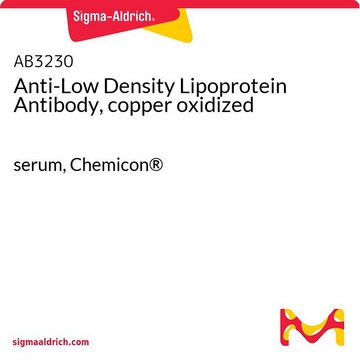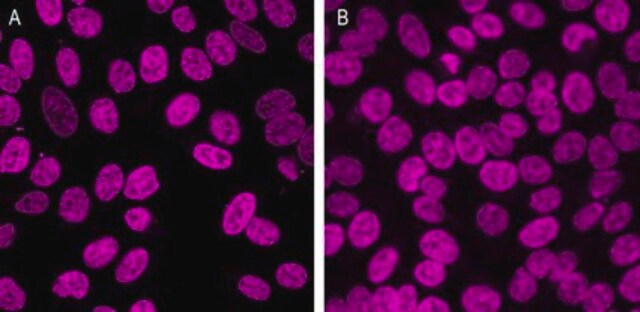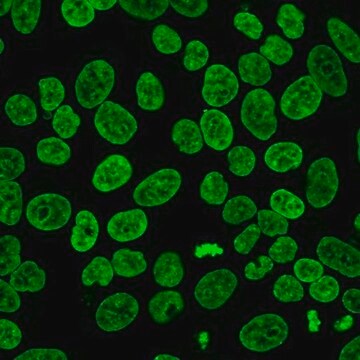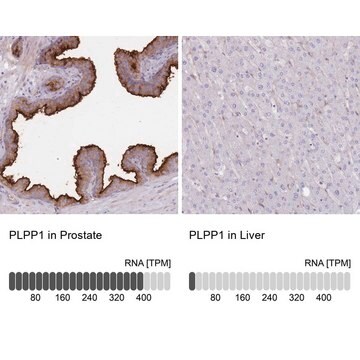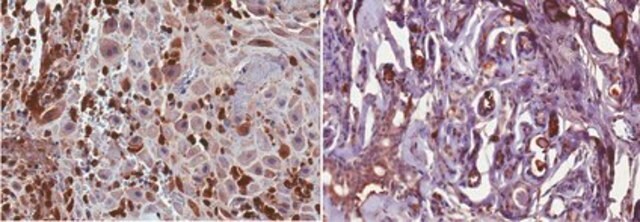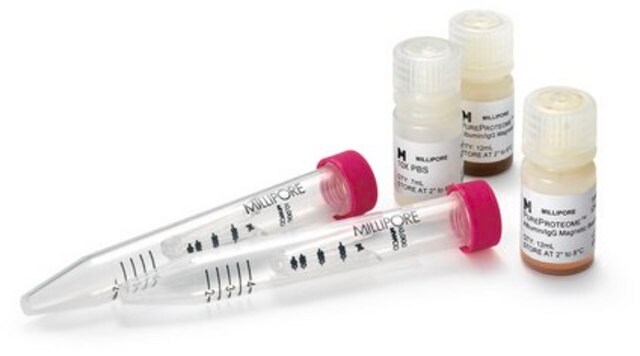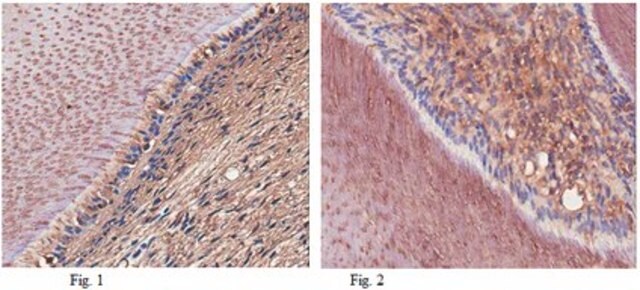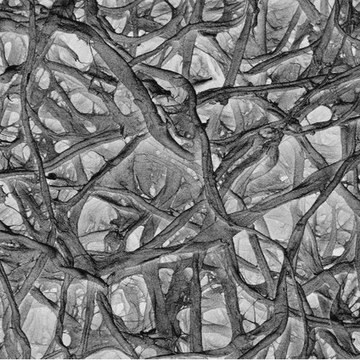MABS1220
Anti-LTP/CETP Antibody, clone 14–8F
clone 14-8F, from mouse
Sinônimo(s):
Cholesteryl ester transfer protein, CETP, Lipid transfer protein I, LTP
About This Item
Produtos recomendados
fonte biológica
mouse
Nível de qualidade
forma do anticorpo
purified immunoglobulin
tipo de produto de anticorpo
primary antibodies
clone
14-8F, monoclonal
reatividade de espécies
mouse, human, rabbit
técnica(s)
ELISA: suitable
western blot: suitable
Isotipo
IgG2aκ
nº de adesão UniProt
Condições de expedição
wet ice
modificação pós-traducional do alvo
unmodified
Informações sobre genes
human ... CETP(1071)
Descrição geral
Especificidade
Imunogênio
Aplicação
ELISA Analysis: A representative lot was conjugated with HRP and used as the detection antibody in combination with clone 3-11D (Cat. No. MABS1219) as the capture antibody for the detection of mouse plasma LTP/CETP by sandwich ELISA (Wu, C.A., et al. (2002). Arterioscler .Thromb. Vasc. Biol. 22(8):1347-1353).
ELISA Analysis: A representative lot, when conjugated with HRP and used as the detection antibody, showed pH-dependent LTP/CETP-binding activity with the maximum reactivity at a weakly acidic condition of pH 5 to 5.5 in sandwich ELISA applications (Saito, K., et al. J. Lipid Res. (1999). 40(11):2013-2021).
Western Blotting Analysis: A representative lot detected both rabbit and human LTP/CETP by Western blotting under either reducing or non-reducing condition (Ko, K.W., et al. (1994). J. Biol. Chem. 269(45):28206-28213).
Inhibits Activity/Function: A representative lot inhibited both rabbit and human LTP/CETP-mediated triglyceride (TG), but not cholesteryl ester (CE), transfer from low density lipoprotein (LDL) to high density lipoprotein (HDL) (Ko, K.W., et al. (1994). J. Biol. Chem. 269(45):28206-28213).
Inhibits Activity/Function: A representative lot effectively inhibited human LTP/CETP-mediated triglyceride (TG) transfer from high density lipoprotein (HDL) to to apoB-containing lipoproteins in human plasma. Clone 14-8F (14-8H) also inhibited cholesteryl ester (CE) transfer in the same assay by 40% (Ko, K.W., et al. (1994). J. Biol. Chem. 269(45):28206-28213).
Signaling
Lipid Metabolism & Weight Regulation
Qualidade
Western Blotting Analysis: 0.5 µg/mL of this antibody detected purified human plasma LTP/CETP.
Descrição-alvo
forma física
Armazenamento e estabilidade
Outras notas
Exoneração de responsabilidade
Não está encontrando o produto certo?
Experimente o nosso Ferramenta de seleção de produtos.
Código de classe de armazenamento
12 - Non Combustible Liquids
Classe de risco de água (WGK)
WGK 1
Ponto de fulgor (°F)
Not applicable
Ponto de fulgor (°C)
Not applicable
Certificados de análise (COA)
Busque Certificados de análise (COA) digitando o Número do Lote do produto. Os números de lote e remessa podem ser encontrados no rótulo de um produto após a palavra “Lot” ou “Batch”.
Já possui este produto?
Encontre a documentação dos produtos que você adquiriu recentemente na biblioteca de documentos.
Nossa equipe de cientistas tem experiência em todas as áreas de pesquisa, incluindo Life Sciences, ciência de materiais, síntese química, cromatografia, química analítica e muitas outras.
Entre em contato com a assistência técnica